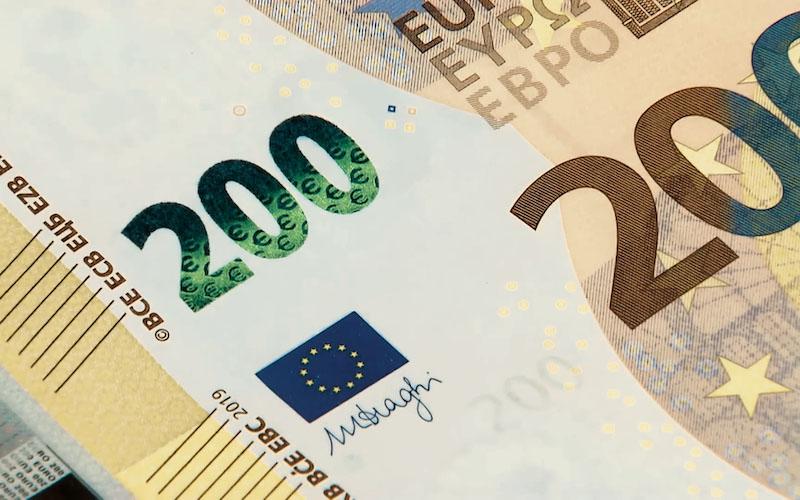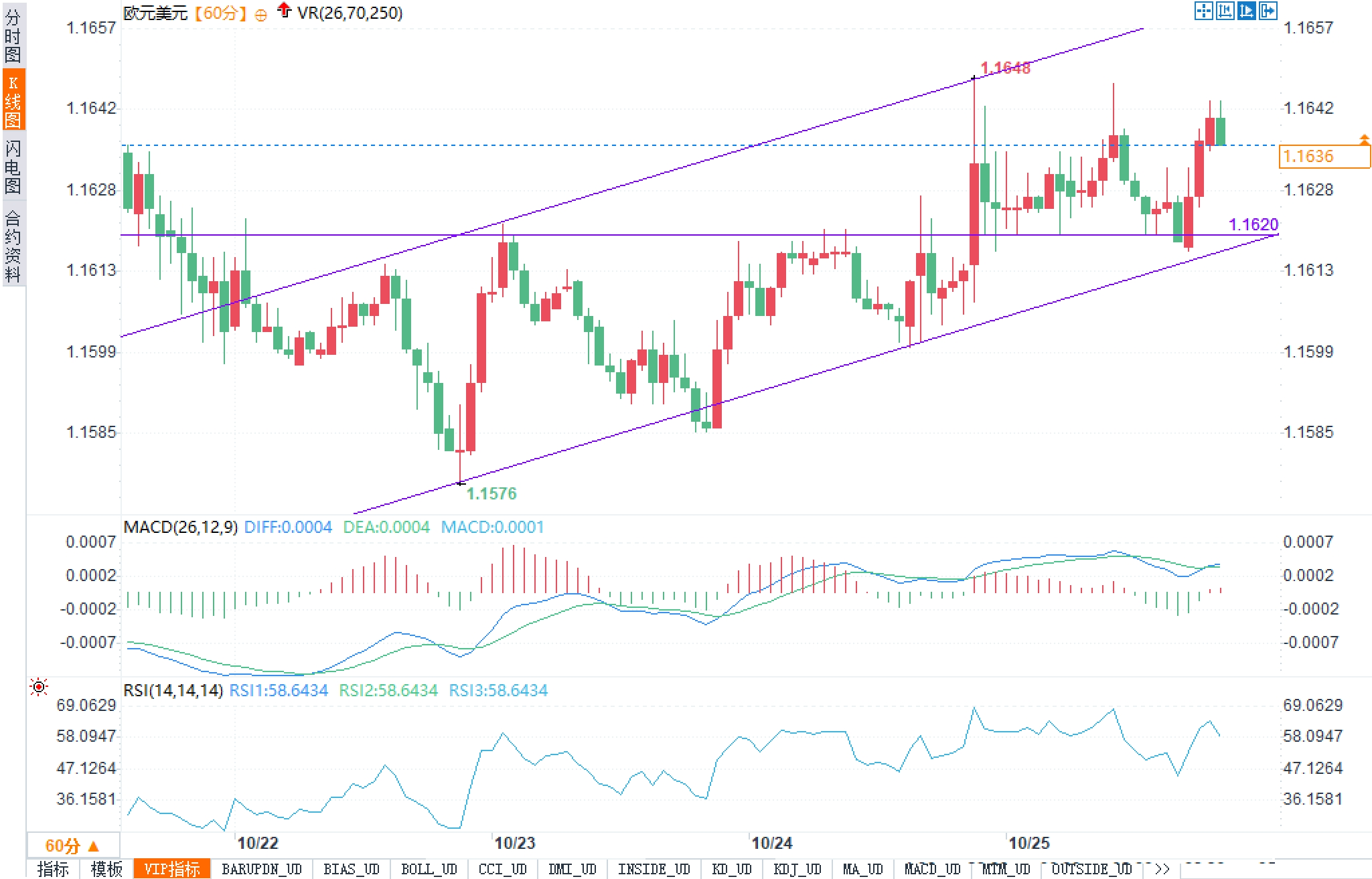1.1650 is hanging in the balance! The fate of the Euro hangs on two lines of rhetoric: who will be the first to predict a dollar collapse?
2025-10-27 19:59:07

Macro level
The European Central Bank is widely expected to signal the end of its easing cycle. According to a consensus from multiple institutional surveys, the medium-term deposit facility rate is likely to remain at 2% until 2027, with only approximately 17% of respondents believing another hike in 2026 is possible. This setting essentially anchors nominal interest rates in the eurozone within a moderate range, meaning that future tolerance for inflation and growth will be primarily reflected through forward guidance and balance sheet management. In contrast, following the Federal Reserve's benign inflation reading last week, the market is pricing in a near-certainty of a 25 basis point rate cut this week. Focus is shifting to Powell's description of the path forward in his post-meeting press conference: If he emphasizes "caution without pre-setting a path," the interest rate term structure is likely to continue to decline at the front end, while the long end will remain relatively firm, leading to a temporary reduction in the dollar's yield advantage. Conversely, if he emphasizes "vigilance against a decline in inflation," a rebound in front-end interest rates will support the dollar.
Within an interest rate differential-driven framework, the euro's pivot against the dollar depends on the relative progress of the two central bank's policy cycles. If the ECB confirms its "wait-and-see, but no further easing" stance, it would effectively remove the tail risk of further easing from a negative scenario. If the Fed follows through with its rate cuts while remaining restrained in its rhetoric, the yield spread between the two currencies would tend to narrow, favoring a temporary stabilization of the euro. However, if the Fed emphasizes that financial conditions are not yet sufficiently accommodative and raises greater concerns about inflationary stickiness, real US interest rates could rise, thereby limiting the euro's potential rebound. In other words, the direction of policy divergence is relatively favorable for the euro, but the extent of this divergence will depend on the details of post-meeting communications.
Political risk is the second factor influencing the euro's risk premium. Uncertainty about the French agenda has increased again. The "negotiating dividend" brought about by the postponement of pension reform has prompted some factions to seek further concessions and promote the idea of raising taxes on high-income groups. In the capital market, the Franco-German interest rate differential has temporarily widened, indicating that the sovereign spread risk premium within the eurozone is being priced back in. For the euro, this type of "endogenous risk" typically transmits through two channels: first, it suppresses risk appetite for eurozone equities and credit, resulting in a more risk-averse cross-asset flow; second, it raises the discount rate for eurozone local currency assets, thereby weakening the euro's relative attractiveness on the foreign exchange market. As long as the Franco-German interest rate differential does not return to its previous convergence path, the euro's upward trend is likely to be constrained by sentiment.
Data
The German business climate survey showed marginal recovery: the IFO business climate index rose from 87.7 to 88.4, exceeding expectations. The sub-index for future expectations jumped from 89.7 to 91.6, reaching a three-year high, reflecting improved business confidence in future activities. However, the sub-index for current conditions dipped slightly to 85.5, suggesting that the actual recovery remains modest. This structure helps alleviate pessimistic expectations about Eurozone growth momentum and reinforces the narrative of "growth stabilizing at the bottom and policy on hold." For the euro against the dollar, a strengthening sub-index for expectations typically provides some relative support for the euro through a chain reaction of "declining probability of upward shift in terminal interest rate expectations, convergence of growth tail risks, and improved performance of risky assets." However, the strength of this support is constrained by the political premium and the external dollar interest rate differential.
The narrative surrounding the US dollar has recently shifted from "strong data – reflation" to "wait-and-see – verifying the path of rate cuts." The latest price data shows that the year-on-year growth of the headline CPI fell short of market expectations for the first time in three months, with the core CPI also slowing from 3.1% to 3.0%. The interest rate futures market has pushed the probability of a 25 basis point rate cut this week to approximately 96.7%. This "almost certain" rate cut pricing shifts the focus of trading to the post-meeting statement and press conference. If the dot plot or wording suggests a high threshold for further action this year, the US dollar is likely to remain range-bound. If the tone suggests that further action is not ruled out if the inflation decline persists, the support for the US dollar's interest rate differential will weaken, creating conditions for stabilization and a volatile rise in the euro.
Technical aspects
The 60-minute chart shows that the EUR/USD's rising channel, which began at 1.1576, remains intact, with the current price trading above the channel's middle line. The 1.1620 level has repeatedly been validated as a short-term pivot point, while resistance is present near 1.1655 (previous high 1.1648), with a long upper shadow reflecting limited upside momentum.

The MACD formed a minor golden cross near the zero axis, with the candlestick chart turning positive from negative, but with limited strength, suggesting a slow upward trend. The RSI is around 58, indicating improved momentum but not overheating. If the channel holds, the price trend will likely be characterized by a gradual upward trend in highs and lows. If it falls below 1.1620, the market may shift to a retest of the lower band, around 1.1600-1.1610. The overall structure is bullish, but resistance from the upper boundary remains, suggesting a range-bound pattern in the short term.
Market outlook
Looking ahead to the rest of this week, four key variables will determine the direction of the EUR/USD exchange rate. First, whether the Federal Reserve emphasizes "data dependence and case-by-case assessment" while cutting interest rates, and the strength of its confidence in a decline in inflation, will determine the direction of both front-end and real interest rates. Second, whether the European Central Bank (ECB) will clarify its stance of "ending the easing cycle" through wording and downplay the possibility of further easing in its risk assessment, thereby stabilizing euro interest rate expectations. Third, marginal progress on France's internal agenda and its impact on the Franco-German interest rate differential. If the market sees a more orderly fiscal and reform path, the risk premium may decline. Fourth, the preliminary third-quarter Eurozone GDP figures will validate the "improving expectations vs. recovering reality" trend. If a mismatch between "strong expectations and weak reality" emerges, the euro's upward momentum may remain limited.
- Risk Warning and Disclaimer
- The market involves risk, and trading may not be suitable for all investors. This article is for reference only and does not constitute personal investment advice, nor does it take into account certain users’ specific investment objectives, financial situation, or other needs. Any investment decisions made based on this information are at your own risk.





















